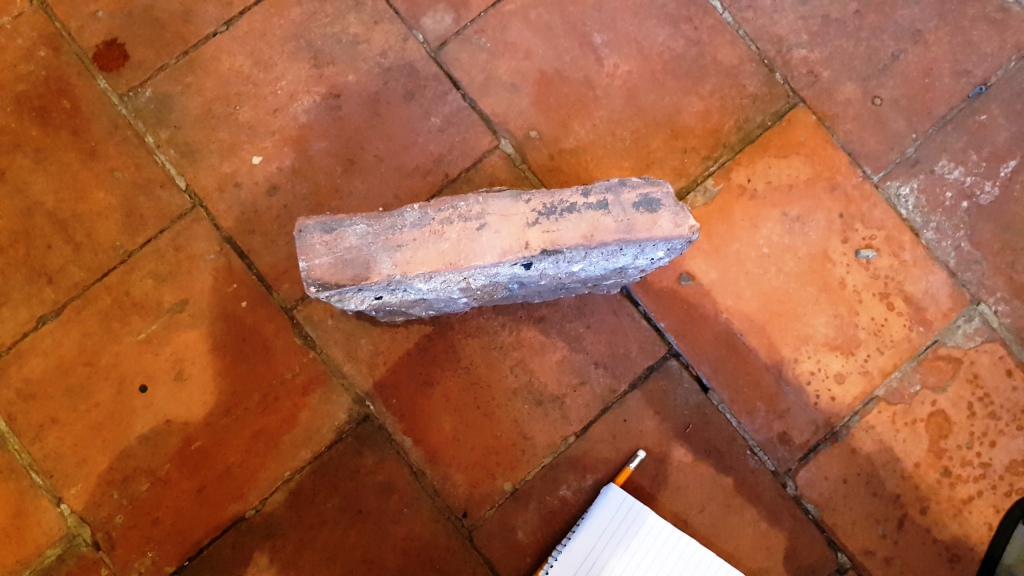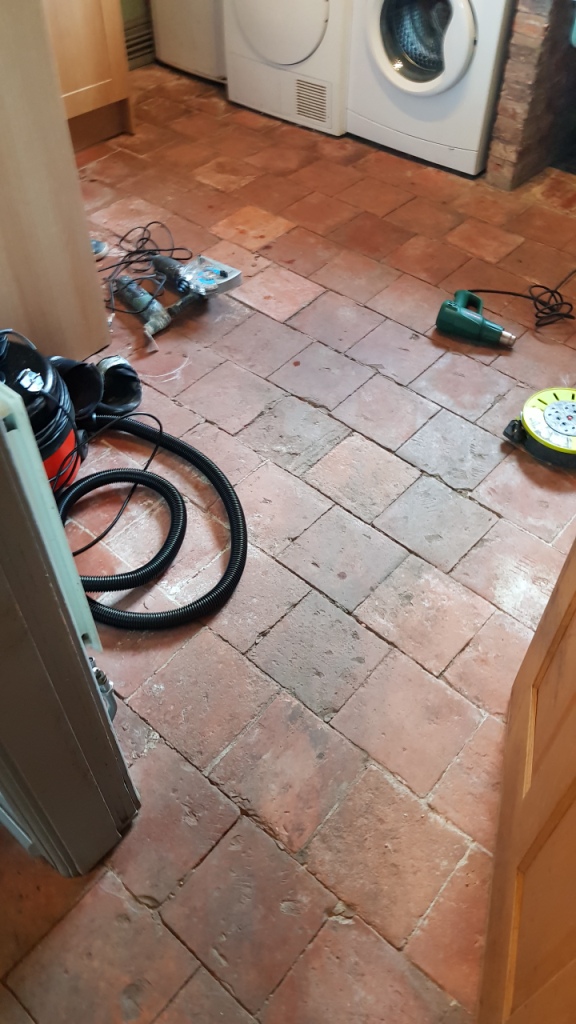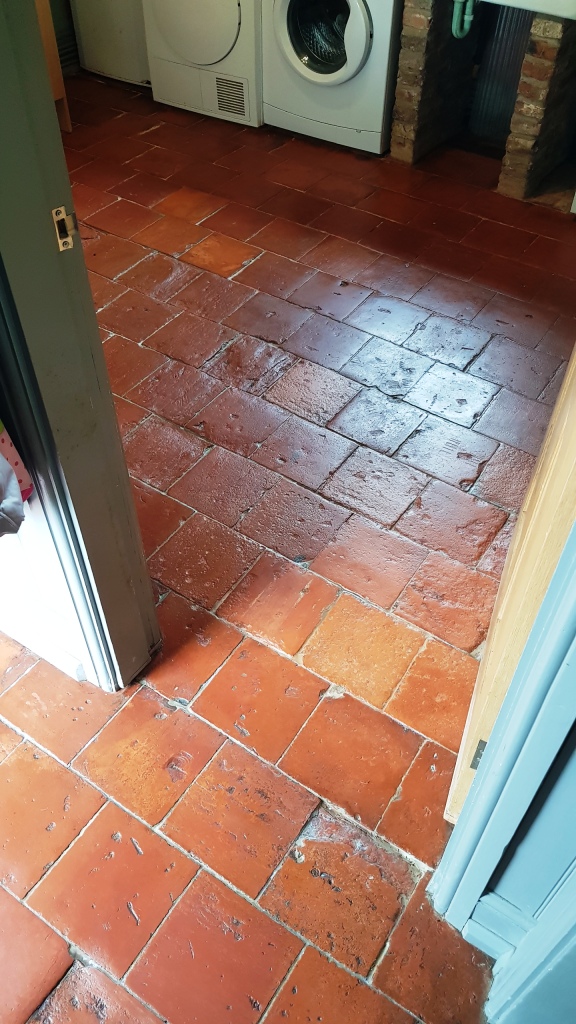Renovating a Victorian Vicarage Hallway Tiles in Sheffield
Our client had recently moved into this beautiful former vicarage in Sheffield, the hallway had a stunning Victorian tiled floor and there were quarry tiles in two adjoining rooms. The floors hadn’t been maintained properly in quite some time and due to building work in the house they had become very dirty; the Victorian floor also needed some repairs doing as there were areas of loose tiles.

The new owner wanted the floors restoring which in this case meant making some repairs, deep cleaning the tiles and then sealing to protect them from further staining. I quoted for doing the work which was accepted and agreed a date to return and complete the work.
Repairing a Victorian tiled floor
It made sense to start with the tile repairs first, so I inspected the whole floor for loose tiles and carefully removed them. The tiles and floor were then cleaned up to remove the old adhesive and grout.

The tiles were fixed into place using a quick setting adhesive and whilst that was setting I started cleaning the floor, returning to grout the tiles later with a matching grout once the adhesive had set firm.
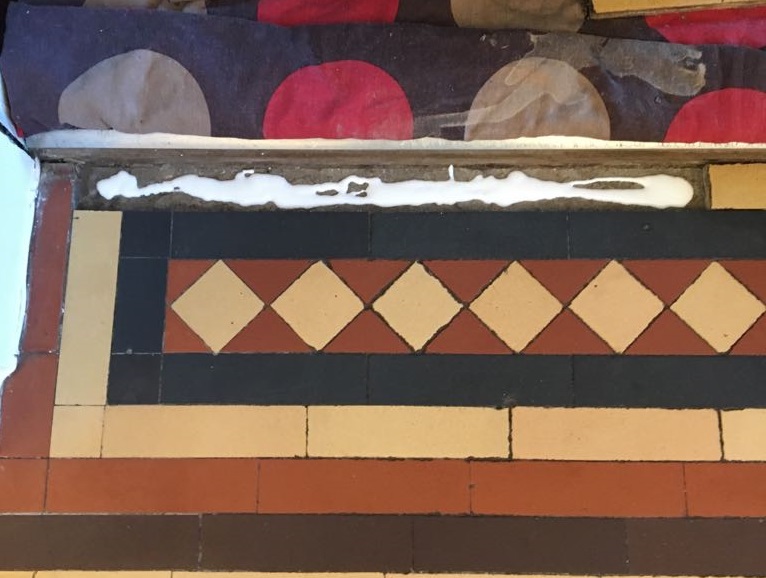
Deep Cleaning a Victorian tiled floor
To deep clean the floor and remove any old sealers present on the tiles I applied a strong dilution of Tile Doctor Remove and Go. This product works best if you leave it to dwell and soak into the tile for about ten minutes before scrubbing it in. There was a large area to cover so I worked in sections and used a floor polishing machine fitted with a coarse 200 grit burnishing pad to grind off surface dirt and work the product into the tile to release the ingrained dirt. I ran the machine on a slow setting which helps reduce splashing and once the section had been cleaned I rinsed off the soiled cleaning solution with water which was then extracted using a wet vacuum.

Once the whole floor was clean I followed up with an Acid Wash which removes old grout smears from the tile and neutralises any efflorescence salts inherent in the tile. Efflorescence is a common problem with old floors where no damp proof membrane has been installed and can result in white salt deposits appearing on the surface on the floor. I used Tile Doctor Acid Gel for this step, being in gel form its easier to manage than other products and used the 200-grit burnishing pad to scrub it in. The slurry was then removed with a wet vacuum and the floor dried as much as possible with air movers leaving it to fully dry off overnight.
 |
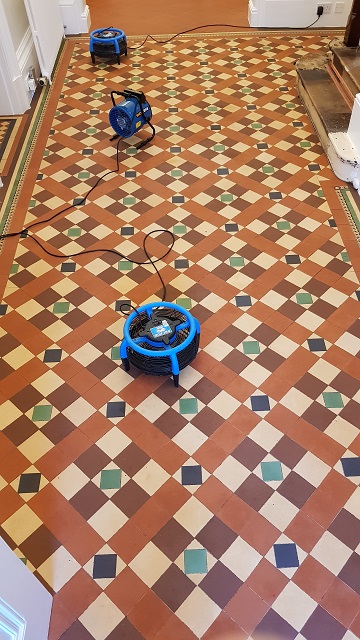 |
Sealing an Old Victorian Hallway Tiles
The next day I returned to seal the floors checking first that the tiles were dry. There are a number of sealers I could have used on the floor, but the owner preferred a matt appearance and I wanted to use a fully breathable sealer to ensure it could cope with moisture rising up through the floor due to the lack of the damp proof membrane.
 |
 |
With these considerations in mind I choose Tile Doctor Colour Grow which is an impregnating sealer that protects the tiles from within by occupying the pores in the clay thereby preventing anything else from becoming ingrained there. The other advantage of Colour Grow is it’s a colour intensifying sealer that improves the colours in the tile.

Only two coats of Colour Grow were needed, and I think you will agree the floor now looks very clean and so much more vibrant.

Restoring an old Victorian Tiled floor in Yorkshire
Renovating a Victorian Vicarage Hallway Tiles in Sheffield Read More »





